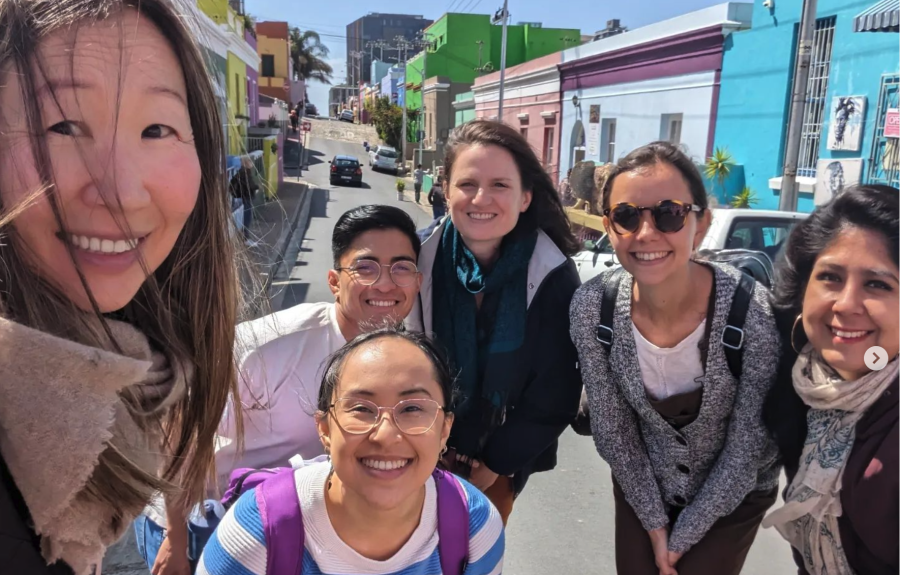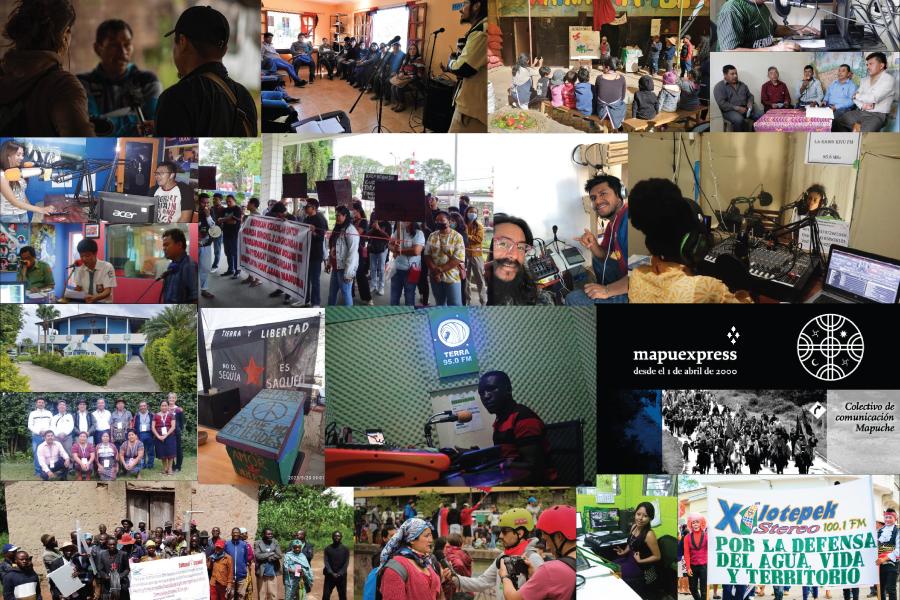Till taught by pain,
Men really know not what good water's worth;
If you had been in Turkey or in Spain,
Or with a famish'd boat's-crew had your berth,
Or in the desert heard the camel's bell,
You'd wish yourself where Truth is—in a well.
Lord Byron (George Gordon Noel Byron)
Don Juan (canto II, st. 84)
Water—the source and sustenance of all life—increasingly is becoming a source of catastrophic conflict and destruction. The successive hurricanes that battered the planet during the last 12 months, the melting of the polar ice caps, even the genocide in Darfur, are the fallout of unbridled human competition for resources, for good purposes and bad. As the human population and demand for development rise, the consequence of our failure to manage finite resources, such as water, in sustainable ways becomes ever more devastating.
Indigenous peoples the world over remind us that the path humanity has chosen is not the only option. While their cultures and environmental circumstances differ vastly, indigenous peoples share an ethos for living in harmony with nature. They take pride in their respect for the earth and her resources. When forces outside their control compel them to adapt to changed conditions, they tend to innovate in environmentally sustainable ways. In both worldview and practice, they offer much to emulate.
In March 2006, the Fourth World Water Forum will take place in Mexico City. There nongovernmental activists, international lending agencies, and senior ministers of most of the world's governments will discuss ways that the target set in the United Nation's Millennium Development Goals—to reduce by half the more than 1 billion people who lack access to safe drinking water—can be met. This year participants will focus on solutions that have been implemented successfully at the community or local level, and that show promise for replication in other locales. This issue of the Cultural Survival Quarterly, which focuses on Indigenous Peoples and Water Rights, is timed to contribute to that discussion.
The Right to Water
To begin, it is worth reminding ourselves that water is a basic human right; indeed it is a prerequisite for realizing all other human rights, including the right to life itself. The Committee on Economic, Social and Cultural Rights, the body established by the United Nations to authoritatively interpret the meaning of the rights set forth in the International Covenant on Economic, Social and Cultural Rights (ICESCR), has declared that the "human right to water entitles everyone to sufficient, safe, acceptable physically and affordable water for personal and domestic uses." That right is available to all without discrimination of any kind.
Article 1, paragraph 2 of the ICESCR provides that a people may not "be deprived of its means of subsistence." The Committee has declared that this right imposes on States the duty to ensure "that there is adequate access to water for subsistence farming and for securing the livelihoods of indigenous peoples." The Committee further has declared that "water should be treated as a social and cultural good, and not primarily as an economic good. The manner of the realization of the right to water must also be sustainable, ensuring that the right can be realized for present and future generations."
In addition, the Committee calls upon States to give special attention to individuals and groups who have traditionally faced difficulty in exercising their right to water. In particular, States should ensure that:
- Indigenous peoples' access to water resources on their ancestral lands is protected from encroachment and unlawful pollution. States should provide resources for indigenous peoples to design, deliver, and control their access to water.
The burden falls on States to ensure that the right to water is respected. Not only must States refrain from interfering with the enjoyment of the right to water, they also must prevent third parties, such as large agricultural or corporate interests, from doing so. To ensure the right to water for future generations, States must adopt comprehensive and integrated water management strategies that may include:
• reducing depletion of water resources through unsustainable extraction, diversion, and damming;
• reducing and eliminating contamination of watersheds and water-related ecosystems by substances such as radiation, harmful chemicals and human excreta;
• monitoring water reserves;
• ensuring that proposed developments do not interfere with access to adequate water;
• assessing the impacts of actions that may impinge upon water availability and natural-ecosystems watersheds, such as climate changes, desertification and increased soil salinity, deforestation and loss of biodiversity; and
• establishing competent institutions and appropriate institutional arrangements to carry out the strategies and programmes.
These are the precise sorts of measures that indigenous peoples have called for in the Indigenous Peoples Kyoto Water Declaration, which they delivered at the Third World Water Forum in Kyoto, Japan, in 2003.
Violations of the Right to Water
As the articles that follow illustrate, where indigenous peoples’ rights to water are concerned, all too often, violations are the rule. Throughout the Andes, in India, and in the Philippines, indigenous peoples are facing increasing competition for their scarce water reserves from agricultural plantations, as well as hydroelectric, mining, and drinking water companies. In Chile, the government's privatization of water, combined with its failure to provide its indigenous peoples with timely and adequate information about how to register their water rights, sold their right to water out from under them.
Similar abuses are illustrated from other parts of the world. On Black Mesa, the ancestral homeland of Hopi and Diné (Navajo) peoples in the American southwest, mining by the Peabody Coal Company has nearly depleted the aquifer on which Native Americans rely for their drinking water. Nearby, peoples from several indigenous nations have gone to court in an effort to stop a ski area from spraying reclaimed wastewater to make artificial snow on the sacred San Francisco Peaks. In the Pacific northwest, mercury from abandoned gold-rush era mines and PCBs and other contaminates dumped into rivers by the US military have polluted the water supply and made fish—a staple of the traditional diet—unsafe for human consumption.
Though not specifically addressed in this issue, CSQ has covered the impact of hydroelectric dams and other large-scale development projects in past issues. More recently a study, carried out by the United Nations Special Rapporteur on the Situation of Human Rights and Fundamental Freedoms of Indigenous Peoples, found that where such developments occur in areas occupied by indigenous peoples, it is likely that their communities will experience profound and unforeseen social and economic changes that devastate their ways of life. Cultural Survival has previously reported on the situation of the Embera-Katio in Colombia, a portion of whose ancestral territories was flooded without their consultation in 1992 to build a hydroelectric dam. As a result, they were forced to move into an area that is heavily ravaged by the country's ongoing armed conflict. Many of their homes and property have been destroyed, several of their leaders have been assassinated or forcibly disappeared, and many have been displaced for a second time as a consequence.
It is no exaggeration to say that violation of the right to water can lead to violent conflict. In Bolivia, for example, the government, at the behest of the World Bank, turned over management of the Cochabamba city water and sewage system to a single-bidder concession of international water corporations in 1999- 2000. Under the arrangement, which was to last for 40 years, water prices increased immediately from negligible rates to approximately 20 percent of monthly family incomes. Citizens' protests were eventually met with an armed military response that left at least six residents dead. The protests continued until the consortium was forced to flee the country.
Of more immediate concern is the situation in Darfur, Sudan, where decades of drought and desertification have intensified competition for scarce resources, particularly water. State interference with traditional dispute resolution mechanisms, and the superimposition of highly corrupt state administrative agencies, compounded underlying intergroup tensions. Over time, these flared into anti-state sentiment that turned violent as a result of the rebels’ easy access to modern weapons. With its attention taken up by peace negotiations in the south of Sudan, the government turned to its supporters among Arab nomadic herders to act in its place. In short order this government-backed contingent, who lacked land and were looking to settle, became a marauding force, the Janjaweed. The Janjaweed has targeted the civilian population for infamous abuses that include mass murder, the burning of villages and displacement of entire communities, and the rape of women and girls. Nearly a year after massive international attention, the situation refuses to abate.
Free, Prior, and Informed Consent
For indigenous peoples, one of the most important aspects of the right to water is the obligation it imposes on States to involve them in the decision-making process when decisions that could impact their water rights are being made. The right to genuine public participation is underscored by the Committee on Economic, Social and Cultural Rights, is embedded in ILO Convention 169 on Indigenous and Tribal Peoples, and is an elemental part of all democratic and political rights-respecting regimes. The Chile and Bolivia cases cited above are but two examples of the consequences that can occur when States violate the consultative aspect of the right.
Indigenous Sustainable Solutions for Protecting Water
This issue contains far more than a litany of horrors about violations of indigenous peoples' right to water. It also describes an array of successful tactics that indigenous peoples have innovated to meet their immediate water needs as well as those of future generations. In India, for example, indigenous women in the frequently drought ridden, and extremely poor, Nuapada region mobilized to press the government to ensure safe and adequate water delivery to their local villages. In the Philippines, the Kankanaey people of the western Mountain Province have adapted a traditional water sharing ritual to equitably distribute scarce water for irrigation agriculture.
In the United States, from educating the public by publishing articles in this magazine to going to court, indigenous peoples are demonstrating that peaceful, empowering educational and political activities can lead to positive, rights-protecting results. No doubt the World Water Forum will reveal many other strategies for sustainable water use and protection that can safeguard the right to water of indigenous peoples—and all people—for generations to come. Cultural Survival looks forward to the learning that will come from that meeting, and to contributing to the worldwide effort to ensure that those findings reach indigenous peoples and States everywhere.
References and further reading:
Hydroelectric Dams," CSQ, Vol. 12, No. 2, (1982); "Land and Resources," SQ Vol. 14, No. 4 (1990).
Report of the Special Rapporteur on the situation of human rights and fundamental freedom for indigenous people, E/CN.4/2003/90 (2003).
Indigenous Peoples and Violent Conflict, CSQ Vol. 29, No. 1 (2005).
Indigenous Responses to Plan Colombia, CSQ Vol. 26, No. 4 (2003).
Economic, Social and Cultural Rights Committee Report of the Special Rapporteur on adequate housing as a component of the right to an adequate standard of living, Mr. Miloon Kothari, (2002).
Report of the International Commission of Inquiry on Darfur to the United Nations Secretary General (25 Jan 2005).
Report of the Special Rapporteur on the situation of human rights and fundamental freedom for indigenous people, supra at paras. 37-43.



